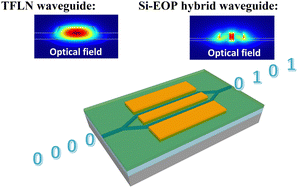Emerging technologies, such as artificial intelligence (AI) and big data, are driving the exponential growth of data traffic in fiber-optic communication networks. This surge in data transmission demands high-speed optical transceivers capable of handling the increased workload. Electro-optic (EO) modulators, which utilize the electro-optic effect to encode electrical signals into optical carriers, play a critical role in facilitating high-speed optical transceivers. However, achieving both high-speed (bandwidth >100 GHz) and high-efficiency (half-wave voltage Vπ < 1 V) modulation poses significant challenges with commercially available silicon and indium phosphide electro-optic modulators due to inherent limitations in material properties. To overcome these limitations, Pockels electro-optic materials have emerged as promising candidates for next-generation high-speed and high-efficiency EO modulation. These materials exhibit femtosecond or attosecond response times for the linear electro-optic effect. In this manuscript, we highlight recent advancements in two prominent Pockels materials: organic poled polymers (also known as electro-optic polymers or EOP) and inorganic thin-film lithium niobate (TFLN). We summarize their unique material properties and explore their performance in electro-optic modulators using various configurations. Additionally, we discuss the fundamental limitations and practical challenges associated with these materials. This perspective might shed light on the potential of Pockels electro-optic materials for achieving high-speed and high-efficiency EO modulation, while also outlining areas that require further investigation and improvement.
